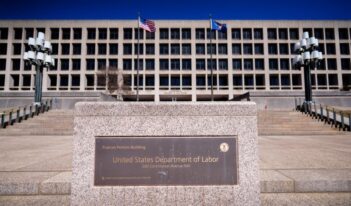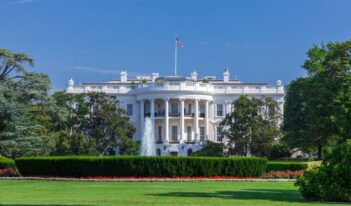
Agency finalizes rule requiring paid sick leave for federal contractors.
You wake up in the morning to the sound of your daughter’s coughing. She tells you that her throat has been hurting all night. She sounds congested. After taking her temperature, you find that she has a 101-degree fever. You tell her that you will take today off to stay at home with her—a seemingly straightforward decision.
But many Americans who live paycheck to paycheck struggle with making this kind of choice. For low-income households, the impact of a lost day of wages could mean having to choose between staying at home with a sick child and paying the month’s rent; between taking care of personal health and putting food on the table. The U.S. Department of Labor recently sought to eliminate the need to make this choice by issuing a final rule that will require employers working under contract with the federal government to provide their employees with paid sick leave.
The rule implements an executive order signed by President Barack Obama in September 2015. The order directed federal agencies to ensure that federal contractors and subcontractors receive one hour of paid sick leave for every thirty hours worked, though employers have the option to cap paid sick leave at seven days per year. The order also included an expansive definition of “sick leave,” allowing employees to use their sick days to recover from illness or injury, go to a doctor for preventative care, care for a sick child or partner, or deal with complications resulting from domestic violence or sexual assault—language echoed in the Labor Department’s final rule.
The rule expands further upon the executive order, defining the types of contracts and contractors eligible for coverage under the order, the requirements and restrictions governing the use of paid sick leave, and procedures for complaint and investigation into violations of the order.
President Obama expressed excitement for the finalization of the rule in an interview with Slate, reportedly stating that having to choose between losing a day of wages and staying at home with a sick child “[is] simply not a tradeoff the wealthiest nation on Earth should be asking working parents to make.”
As a result of the new rule, the Labor Department estimates that approximately 1.2 million employees will gain additional paid sick days, including almost 600,000 employees who currently do not receive any paid sick leave.
The Agency states in the rule that the flexibility allowed by greater access to paid sick leave will result in a variety of advantages, for employers and employees alike. Citing a number of different studies, the Labor Department argues that, for employees, paid sick leave has the potential to greatly reduce the chance of injury and exposure to contagious illnesses; improve the health of dependents, particularly children; and decrease future healthcare expenditures. At the same time, the Labor Department expects employers to similarly benefit from providing paid sick leave: the benefits include increased productivity among employees, greater job retention and lower job turnover, reduced hiring costs, and increased profits.
The Labor Department believes that supplying paid leave for federal contractors will cost an average of almost $350 million per year, but the Obama Administration remains optimistic that the benefits to both employees and employers will outweigh the costs.
The President has also encouraged regulation of paid sick leave in the private sector, calling on Congress to pass the Healthy Families Act. Sponsored by Representative Rosa DeLauro (D-Conn.) and Senator Patty Murray (D-Wash.), the legislation would allow employees in private businesses with fifteen or more workers to earn up to seven paid sick days per year, and establish a definition of “sick leave” that is as broad as that of the Labor Department’s recently finalized rule. The Administration emphasized the importance of this bill in light of the fact that 44 million workers—nearly 40 percent of the private-sector workforce—currently do not have access to paid sick leave.
Several commentators have criticized President Obama’s push for mandatory paid sick leave in the private sector. For example, Sabrina Schaeffer, Executive Director of the Independent Women’s Forum, denounces mandatory paid sick leave as an unnecessary government intrusion into an area that has historically required minimal regulation. Citing the Labor Department’s findings from 2007, she states that the issue is not large enough to warrant government action because 82 percent of workers have access to some paid leave time, with 70 percent of full-time workers already having access specifically to paid sick leave.
James Sherk, a research fellow at The Heritage Foundation, similarly raises several concerns with the rule. He argues that, among other effects, mandatory paid sick leave could lower workers’ total compensation because companies often respond to mandated benefits by reducing wages. Moreover, a policy of mandatory paid sick leave could encourage irresponsible employees to take advantage of the system by taking unnecessary leave without advanced notice due to a lack of disciplinary protections.
Nevertheless, President Obama remains steadfast in his support of paid sick leave. “The bottom line is this: Paid leave is not a luxury,” he reportedly explained. “It’s a necessity. And it’s sound economic policy.”
The Labor Department’s final rule came into effect on November 29, 2016.



